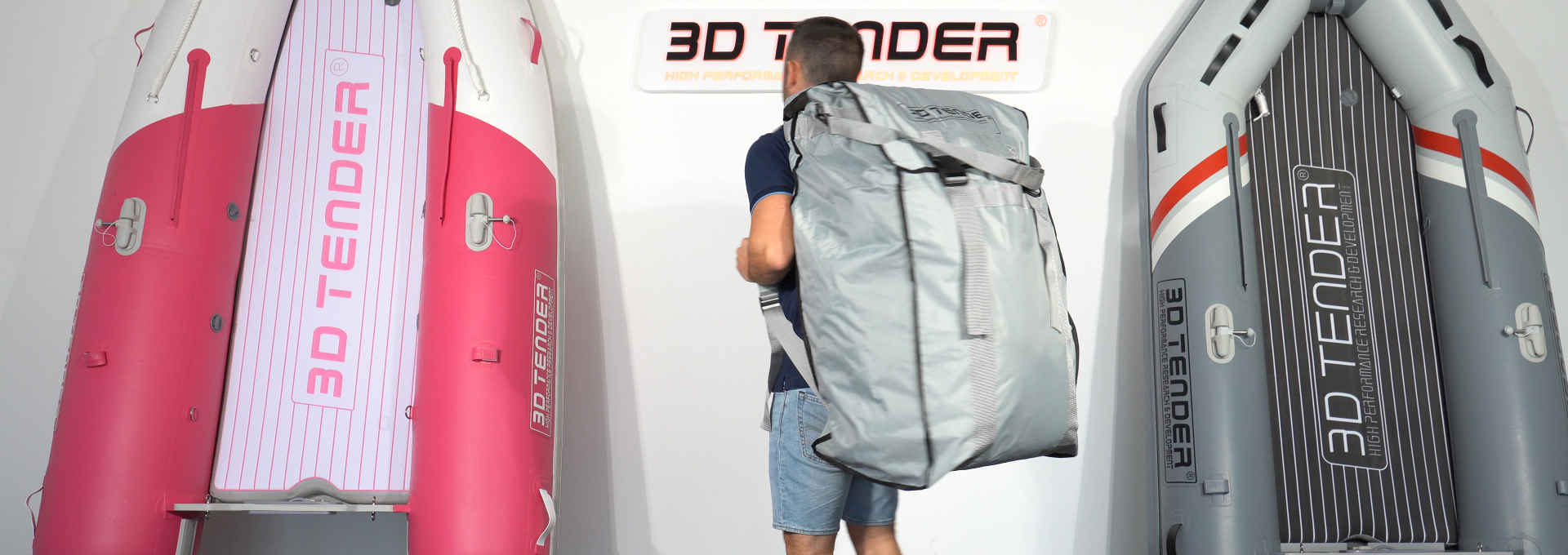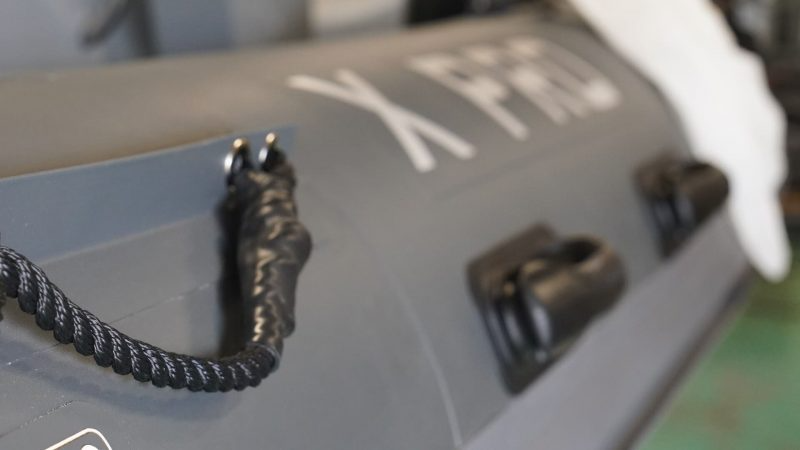-
-
-
With all the choice available on our website, it's easy to get lost when choosing a folding dinghy. Here are the criteria you need to take into consideration to help you make the right decision, and enjoy the sea with complete peace of mind.
-
-
-
-
3D Tender's strength lies in its wide range of products, from RIBs over 8 meters to tenders under 2 meters. But it can also be confusing to choose from. So, to make things clearer, we're sharing our guide to differentiating between folding tenders, according to your needs, constraints and desires.
Why a folding tender?
To begin with, you might ask yourself what would make you choose a folding tender. Their main advantage is their portability. All our folding tenders come with a carry bag. So you can carry your tender directly in the boot of your car, or on your back.

What sizes are available?
Folding tenders come in sizes ranging from 1.60 m to 3.30 m, depending on how you intend to use your tender.
Greater length means greater passenger capacity. So the more passengers you intend to carry, the longer your tender will be. So, for a 1m80 dinghy, we recommend carrying up to two passengers, but you can take two more with a 2m80 dinghy.For some yachtsmen, the length of your tender also depends on the size of your davit, the attachment on your main boat. This will make the choice easier, since the size of your tender must correspond to this attachment. The same applies to the width, and sometimes even the height, of your dinghy, which you'll need to choose according to how it will be stowed on your main boat.
Weight can also tip the balance. The lighter it is, the easier it will be to transport and maneuver on the water. The Round Air and the Twin Air are your best allies if you need a lightweight tender.
 Hull shape
Hull shapeIf seaworthiness is a priority for you, then choose your tender according to the shape of its hull. A good example is the Twin V-Shape, which offers excellent sea passage with its gull-wing hull shape. The tighter the hull at the bow, the better its aerodynamics and wave penetration.
PVC or Hypalon
As we explained in detail in our article on the differences between hypalon and PVC, the fabric of your dinghy may also influence your choice. Hypalon is more resistant to weather and UV than PVC, and PVC is better suited to more occasional use. In either case, good maintenance and fresh water rinsing are very important for the condition of your boat.
For lovers of this fabric, we offer the Twin Hypalon model.

Our 3D Tender guide
In addition of this article, we provide this guide to help you better understand the differences between our appendices, so you can make the best choice for your needs and desires.

-
-









Leave a comment
This site is protected by hCaptcha and the hCaptcha Privacy Policy and Terms of Service apply.